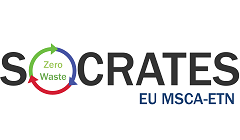Cyanide is the most common lixiviant utilisd to extract gold from primary and secondary raw materials due to its strong complexation with gold and the simplicity of the process. However, environmental and health concerns necessitate alternative methods, such as the recently introduced glycine. Glycine has attracted a lot of attention lately due to its non-toxicity, availability, recyclability, and selectivity for valuable metals. It is also efficient in metals dissolution such as copper, nickel, cobalt, as well as gold and silver. Several studies (Eksteen et al., 2017; Oraby et al., 2019) proposed that gold extraction in agitated glycine media is not feasible without the addition of catalysts (e.g., Cu2+, CN-) and is therefore recommended only for heap and in-situ leaching applications.
In this paper, the authors Pelin Altinkaya, Zulin Wang, Ivan Korolev, Joseph Hamuyuni, Mika Haapalainen, Eero Kolehmainen, Kirsi Yliniemi and Mari Lundström investigate agitated reactor leaching and followed by recovery of gold from mildly refractory ore in cyanide-free glycine media.
This study showed for the first time: (I) that adequate gold extraction (90%) can be achieved in totally cyanide-free glycine media, with intensive agitation in the presence of oxygen within the industrially acceptable timeframe, (II) gold can be successfully (88%) recovered from pregnant glycine solution by the electrochemical-redox replacement (EDRR) method.
Full reference of paper
Pelin Altinkaya, Zulin Wang, Ivan Korolev, Joseph Hamuyuni, Mika Haapalainen, Eero Kolehmainen, Kirsi Yliniemi, Mari Lundström. Leaching and recovery of gold from ore in cyanide-free glycine media. Minerals Engineering 158. DOI: 10.1016/j.mineng.2020.106610
References
Eksteen, J.J., Oraby, E.A., Tanda, B.C., Tauetsile, P.J., Bezuidenhout, G.A., Newton, T., Trask, F., Bryan, I., 2017. Towards industrial implementation of glycine-based leach and adsorption technologies for gold-copper ores. Canadian Metall. Quart. 57 (4), 390–398.
Oraby, E.A., Eksteen, J.J., Karrech, A., Attar, M., 2019. Gold extraction from paleochannel ores using an aerated alkaline glycine lixiviant for consideration in heap and in-situ leaching applications. Miner. Eng. 138, 112–118.
Acknowledgements
|
|
This research has received funding from the European Union’s EU Framework Program for Research and Innovation Horizon 2020 under Grant Agreement No. 721385 (EU MSCA-ETN SOCRATES – https://etn-socrates.eu/). The GoldTail (Grant 319691, ML, ZW) and NoWASTE (Grant 297962, KY) projects, funded by the Academy of Finland, are gratefully acknowledged. |
About The Author
 ESR4, Pelin Altinkaya, graduated as mining engineering from Karadeniz Technical University, Trabzon, Turkey in 2012. She did master studies on Hydrometallurgy about alternative processes to cyanide leaching. During her master, she worked as researcher in a project called “Silver recovery by thiosulphate and ultra-fine grinding from refractory ores and plant tailings”. After the project was completed, in 2016-spring semester, she went for Erasmus exchange program to Montanuniversität, Leoben, Austria. In 2016 winter semester she graduated with master’s degree. Currently, she has been working as a Researcher at Outotec Research Center in Finland since 2017 and at the same time pursuing her PhD studies at Aalto University, Finland. Her research topic is hydrometallurgical process for recovery the critical and valuable metal from industrials process residues. If you are interested on her research topic and you wish to learn more about it, please don’t hesitate to take contact with her at: pelin.altinkaya@mogroup.com
ESR4, Pelin Altinkaya, graduated as mining engineering from Karadeniz Technical University, Trabzon, Turkey in 2012. She did master studies on Hydrometallurgy about alternative processes to cyanide leaching. During her master, she worked as researcher in a project called “Silver recovery by thiosulphate and ultra-fine grinding from refractory ores and plant tailings”. After the project was completed, in 2016-spring semester, she went for Erasmus exchange program to Montanuniversität, Leoben, Austria. In 2016 winter semester she graduated with master’s degree. Currently, she has been working as a Researcher at Outotec Research Center in Finland since 2017 and at the same time pursuing her PhD studies at Aalto University, Finland. Her research topic is hydrometallurgical process for recovery the critical and valuable metal from industrials process residues. If you are interested on her research topic and you wish to learn more about it, please don’t hesitate to take contact with her at: pelin.altinkaya@mogroup.com


.jpg)




